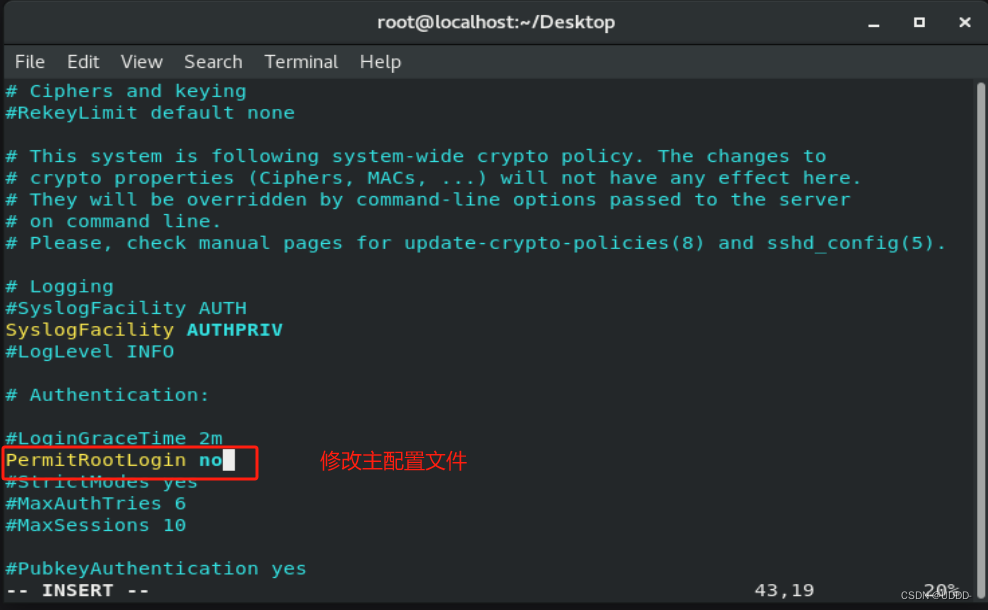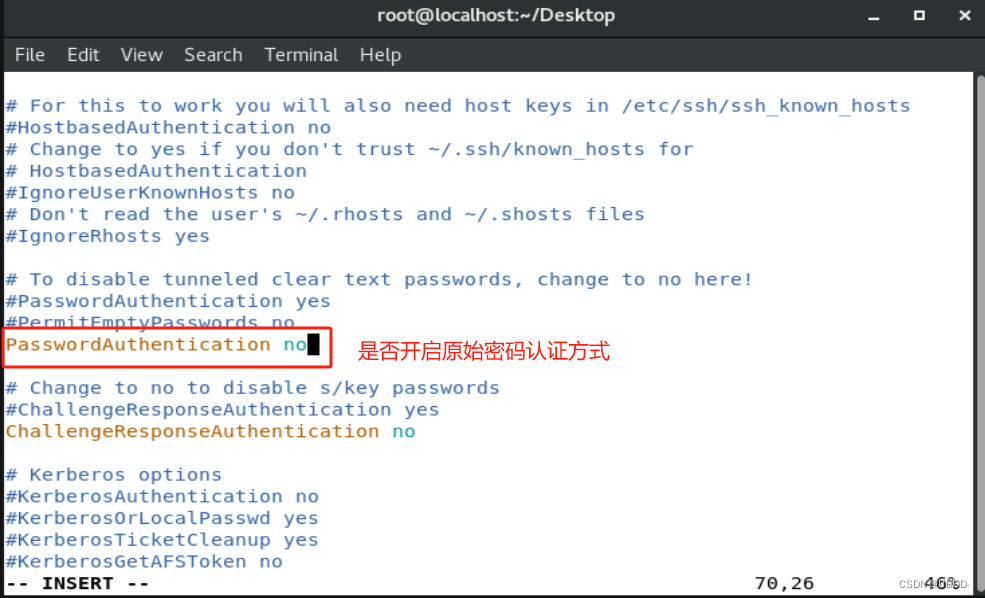热门标签
热门文章
- 1C语言重开29:例题赏析——统计素数并求和_统计素数并求和:输入两个正整数 m 和 n(1≤m≤n≤500),统计给定整数 m 和 n
- 2vocab生成
- 3调研120+模型!腾讯AI Lab联合京都大学发布多模态大语言模型最新综述
- 4千言数据集:文本相似度——提取TFIDF以及统计特征,训练和预测_tfidf文本识别 模型训练
- 5记录一次antd from react 的Upload.fileList受控无法接受到onChange的三种状态_antd react 回显filelist 不显示
- 6强化学习 (Reinforcement Learning)
- 7人工智能相关领域的国际顶会介绍_nips是什么级别的会议
- 8(简洁版)Transformer源码解析_transfomer的源码
- 9【AM】Glow-TTS: A Generative Flow for Text-to-Speech via Monotonic Alignment Search
- 10Opencv学习2.颜色识别模块_cv2颜色识别
当前位置: article > 正文
2_2.Linux中的远程登录服务
作者:2023面试高手 | 2024-04-06 04:33:22
赞
踩
2_2.Linux中的远程登录服务
# 一.Openssh的功能 #
1.sshd服务的用途#
#作用:可以实现通过网络在远程主机中开启安全shell的操作
Secure SHell ===>ssh ##客户端
Secure SHell daemon ===>sshd ##服务端2.安装包#
openssh-server3.主配置文件# /etc/ssh/sshd_conf
4.默认端口#
225.客户端命令#
ssh
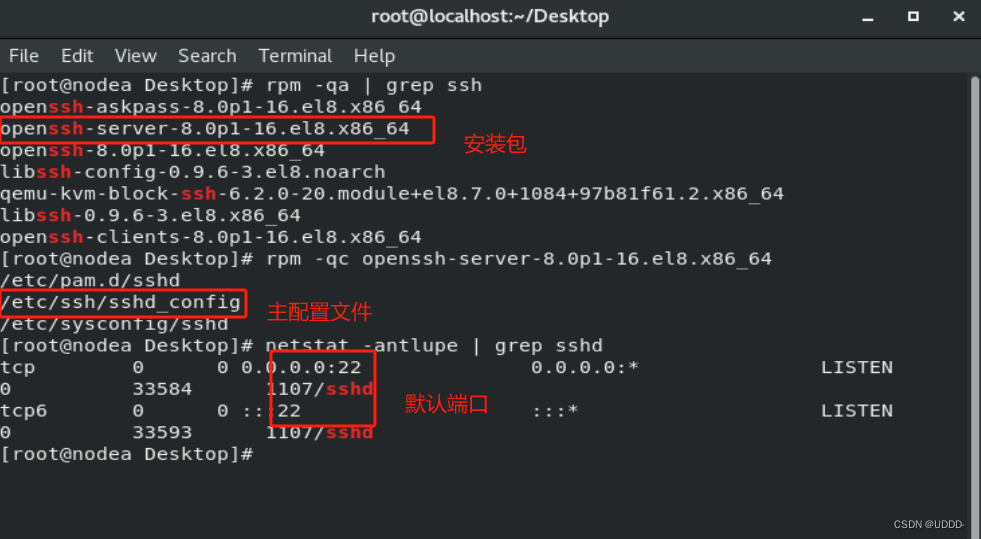
# 二.实验环境配置 #
保证干净的实验环境,重新配置nodea与nodeb的ip,并删除不必要的文件。
配置nodea: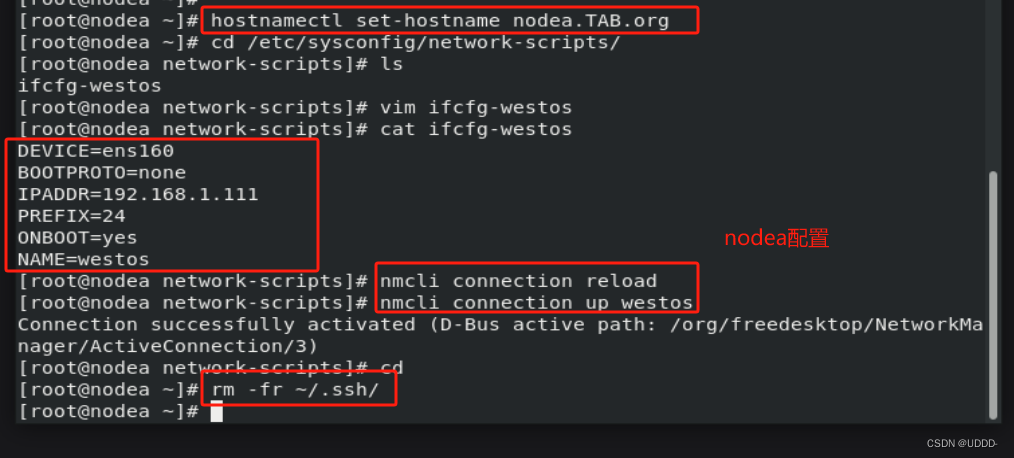
配置nodeb:
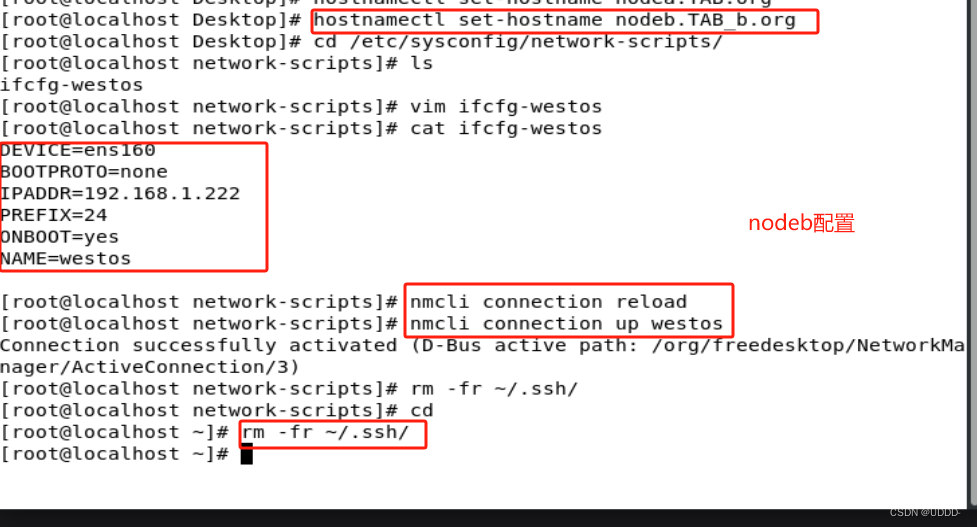
#三.SSH#
(1)基础知识
- ssh [-l 远程主机用户] <ip|hostname>
- ssh -l root 172.25.254.105 ##通过ssh命令在105主机中以root身份开启远程shell
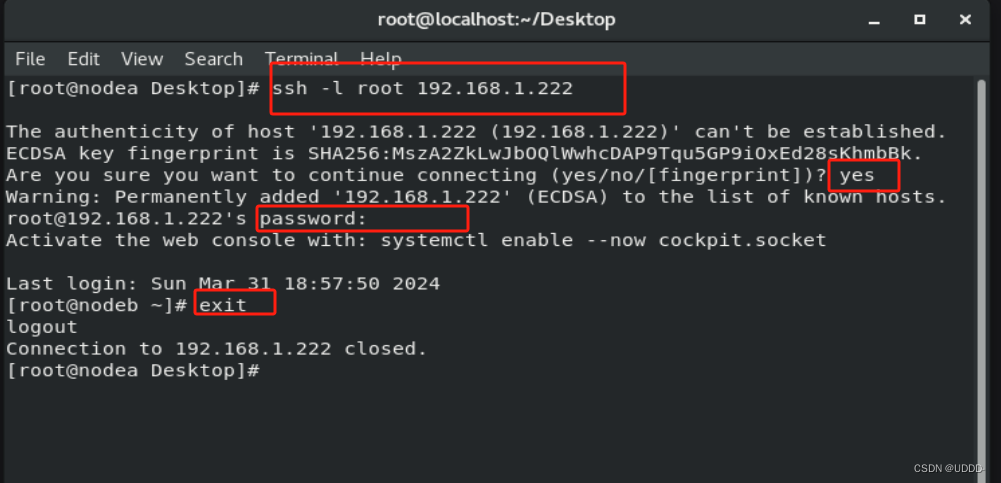
(2)远程主机key的问题解决
- [lee@westos_lee ~]$ ssh -l root 172.25.254.105
- The authenticity of host '172.25.254.105 (172.25.254.105)' can't be established.
- ECDSA key fingerprint is SHA256:1uLJ3EuYzt16BrtDrGdbjOY6wxCZcfppTLSwTI3BuCs.
- Are you sure you want to continue connecting (yes/no/[fingerprint])? yes ##身份证明生成过程确认
- #作用#
- 当收入<yes>后
- 105主机会向当前主机发送身份公钥,并保存此公钥到~/.ssh/know_hosts
- 105主机持有私钥当客户主机再次连接时会对客户主机进行身份验证
-
- 如果身份验证改变拒绝连接效果如下
- [lee@westos_lee ~]$ ssh -l root 172.25.254.105
- @@@@@@@@@@@@@@@@@@@@@@@@@@@@@@@@@@@@@@@@@@@@@@@@@@@@@@@@@@@
- @
- WARNING: REMOTE HOST IDENTIFICATION HAS CHANGED!
- @
- @@@@@@@@@@@@@@@@@@@@@@@@@@@@@@@@@@@@@@@@@@@@@@@@@@@@@@@@@@@
- IT IS POSSIBLE THAT SOMEONE IS DOING SOMETHING NASTY!
- Someone could be eavesdropping on you right now (man-in-the-middle attack)!
- It is also possible that a host key has just been changed.
- The fingerprint for the ECDSA key sent by the remote host is
- SHA256:1uLJ3EuYzt16BrtDrGdbjOY6wxCZcfppTLSwTI3BuCs.
- Please contact your system administrator.
- Add correct host key in /home/lee/.ssh/known_hosts to get rid of this message.
- Offending ECDSA key in /home/lee/.ssh/known_hosts:1
- ECDSA host key for 172.25.254.105 has changed and you have requested strict checking.
- Host key verification failed.
-
- #当连接因为认证问题被拒绝时解决方案#
- vim ~/.ssh/know_hosts ##在此文件中删除报错提示相应的行即可

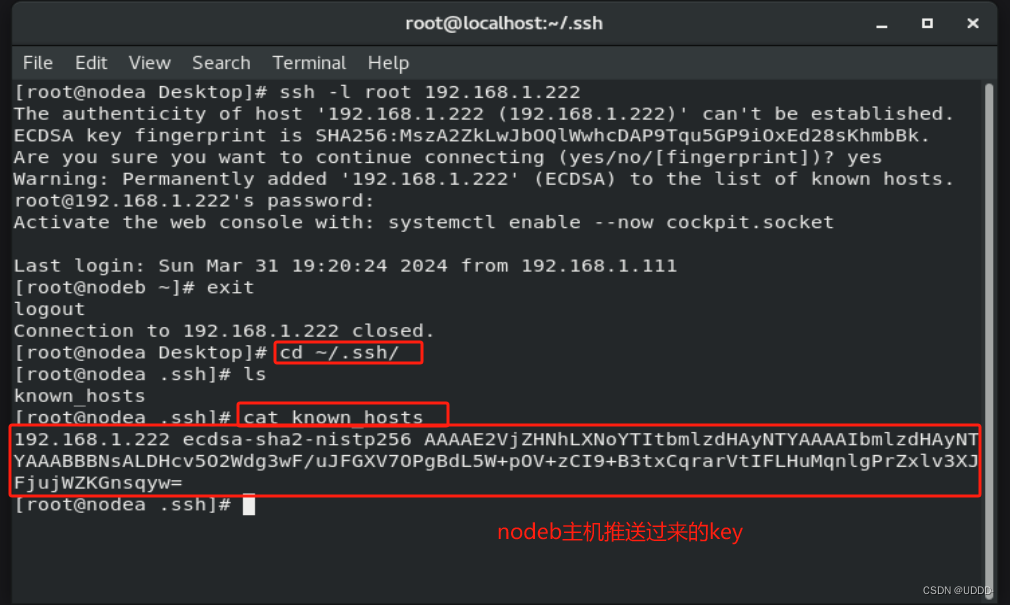

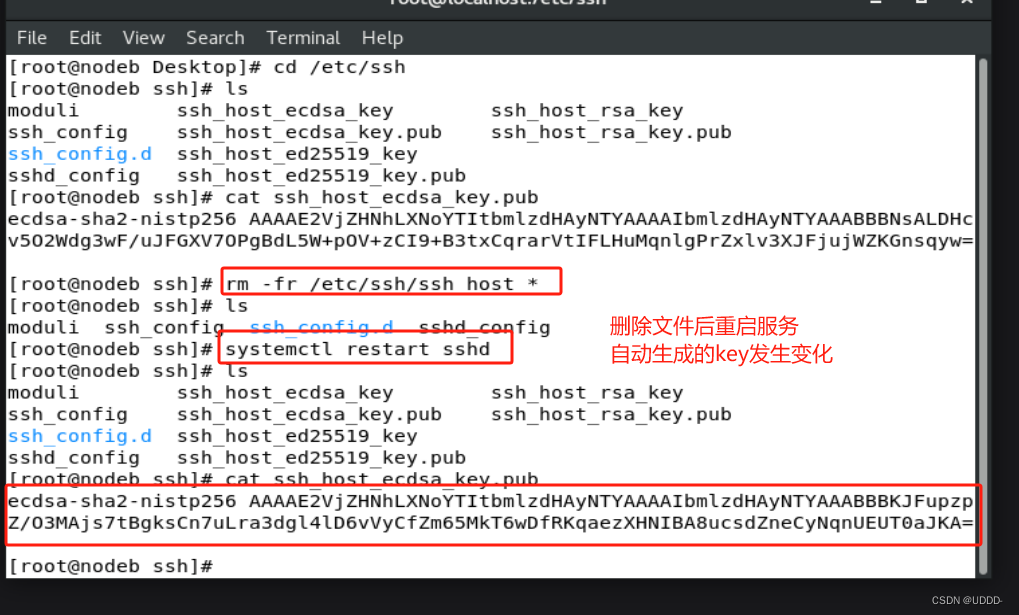

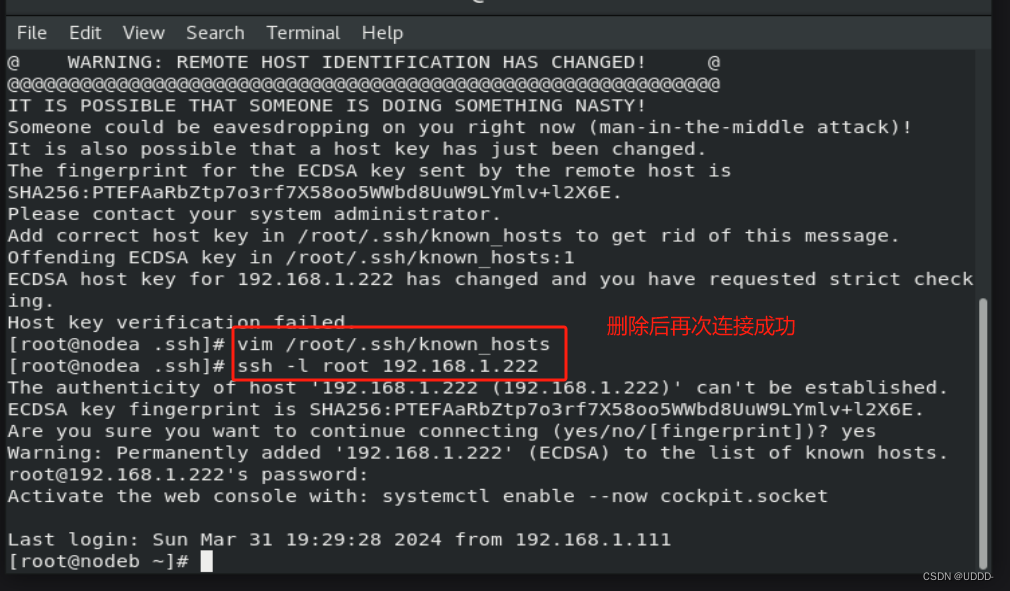
(3)ssh常用参数
- -l #指定登陆用户
- -i #指定私钥
- -X #开启图形
- -f #后台运行
- -o #指定连接参数
- # ssh -l root@172.25.254.x -o "StrictHostKeyChecking=no" 首次连接不许要输入yes
- -t #指定连接跳板
- # ssh -l root 172.25.254.1 -t ssh -l root 172.25.254.105





# 四.sshd key认证 #
(1)认证类型
(1)对称加密
#加密和解密是同一串字符
#容易泄漏
#可暴力破解
#容易遗忘
(2)非对称加密
#加密用公钥,解密用私钥
#不会被盗用
#攻击者无法通过无密钥方式登陆服务器
(2)生成非对称加密密钥
方法一:交互式
- #方法1
- $ ssh-keygen
- Generating public/private rsa key pair.
- Enter file in which to save the key (/root/.ssh/id_rsa): ##输入保存密钥文件
- Enter passphrase (empty for no passphrase): ##密钥密码
- Enter same passphrase again: ##确认密码
- Your identification has been saved in /root/.ssh/id_rsa. ##私钥
- Your public key has been saved in /root/.ssh/id_rsa.pub. ##公钥
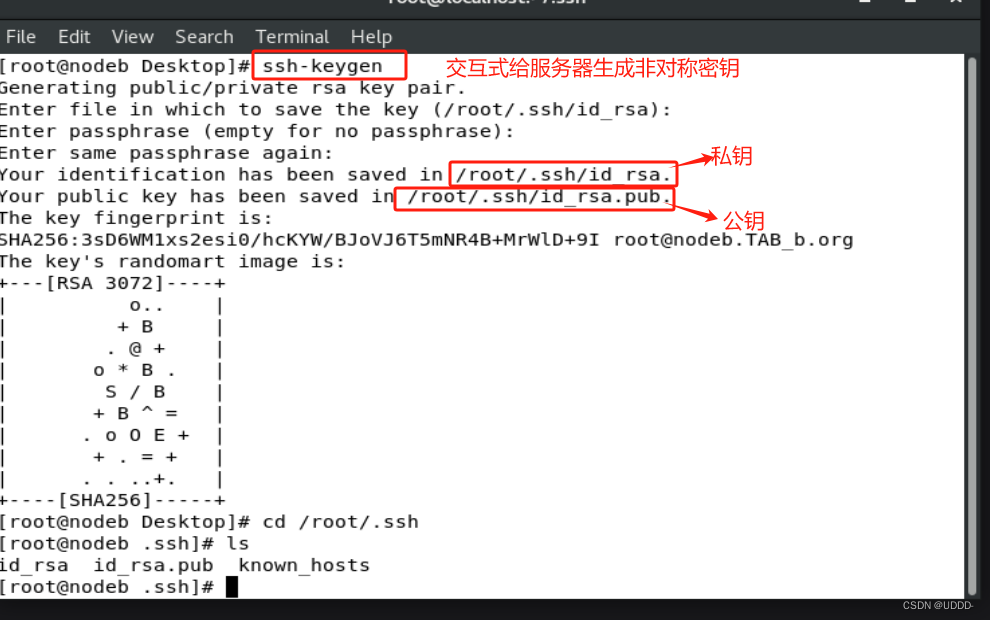
方法二:非交互式
- #方法二
- $ssh-keygen -f /root/.ssh/id_rsa -P ""
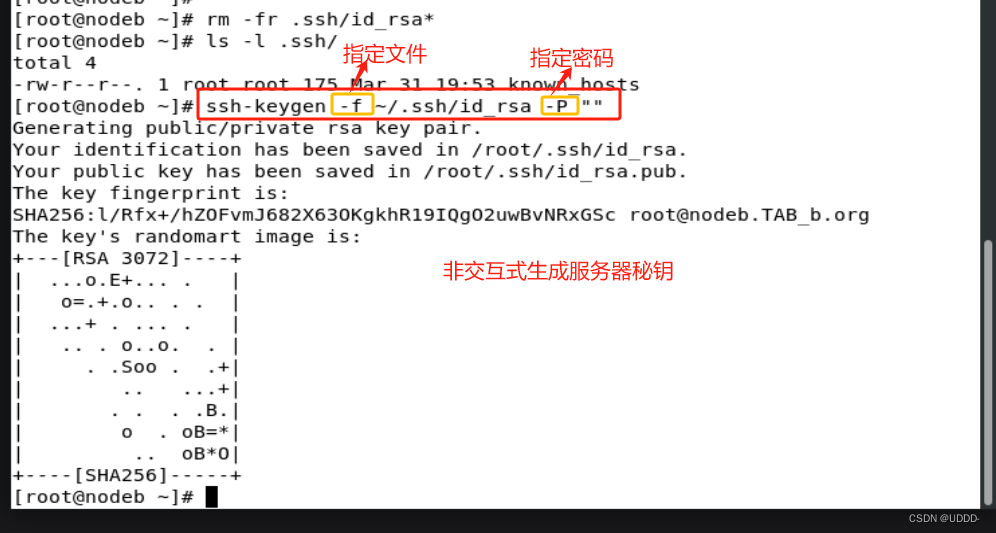
(3)对服务器加密
做完上述步骤,相当于在商店买了一把锁和钥匙,但是还没有给对应的门上上锁
使用下图的步骤,用指定锁对指定用户及主机上锁
- ssh-copy-id -i /root/.ssh/id_rsa.pub username@serverip
- ssh-copy-id -i /root/.ssh/id_rsa.pub lee@172.25.254.105
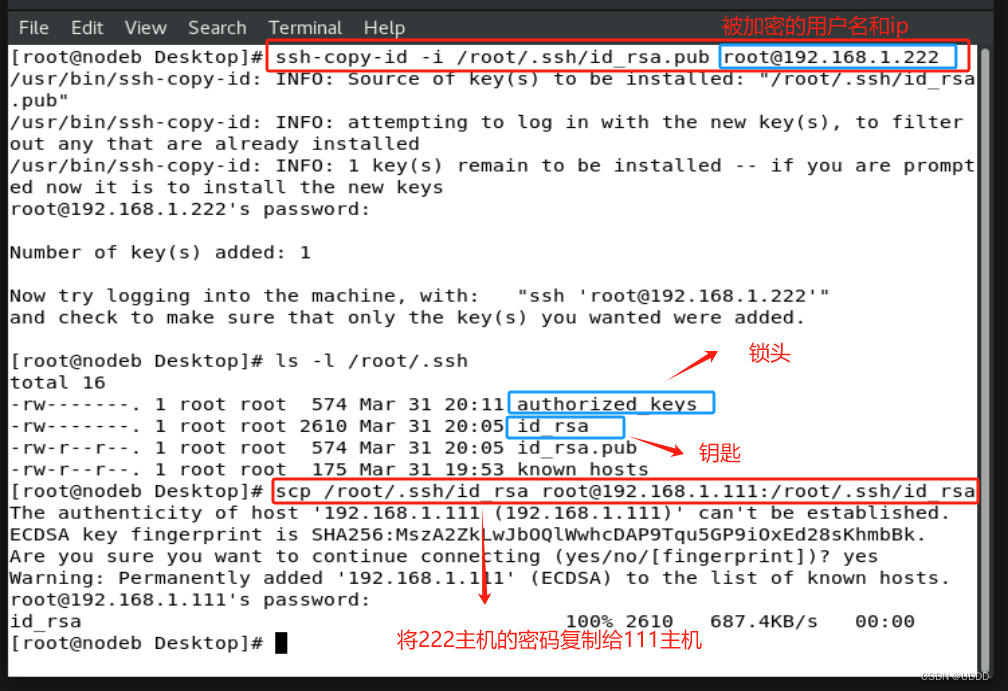
服务器加密测试:
ssh lee@172.25.254.105 ##登陆lee用户不需要输入密码 # 五.sshd 安全优化参数详解 #
# 五.sshd 安全优化参数详解 #
实验环境:
- setenforce 0
- systemctl disable --now firewalld

(1)设定端口为2222
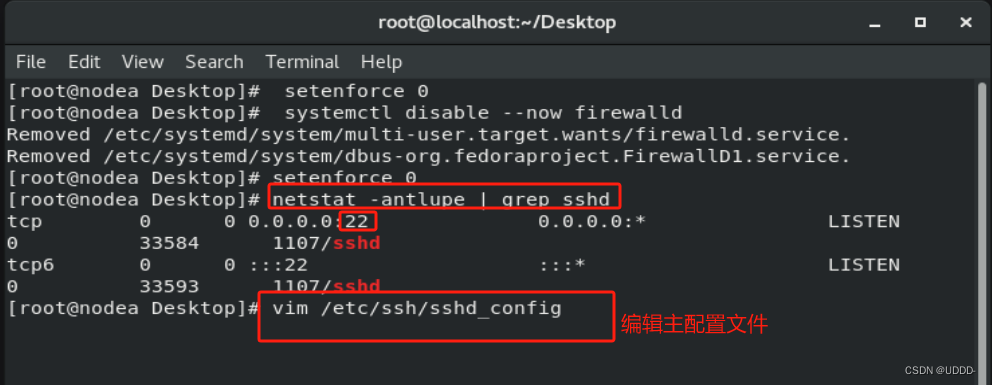
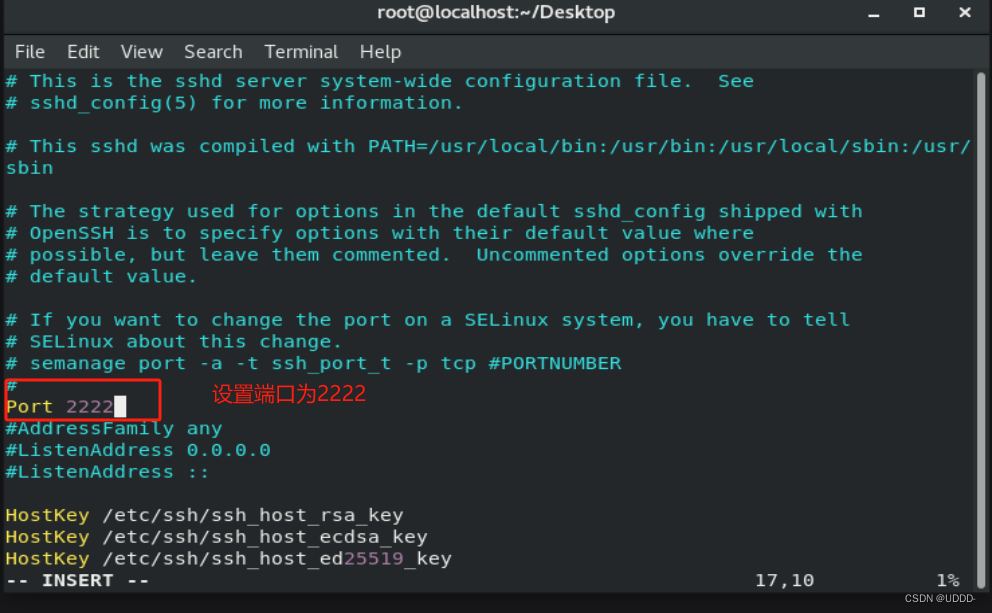
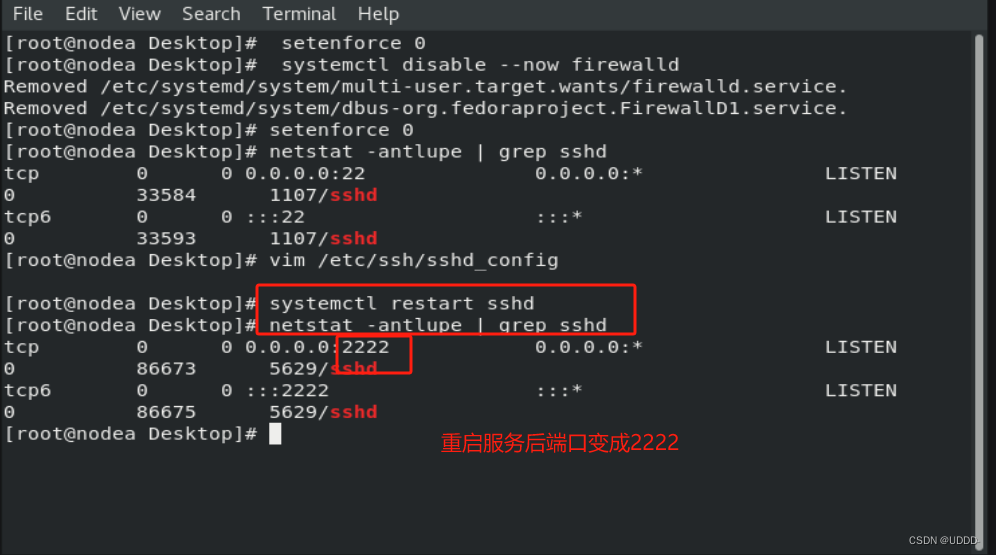

(2)对超级用户登陆是否禁止
PermitRootLogin yes|no #对超级用户登陆是否禁止 
(3)用户黑白名单
- AllowUsers lee #用户白名单
- DenyUsers lee #用户黑名单
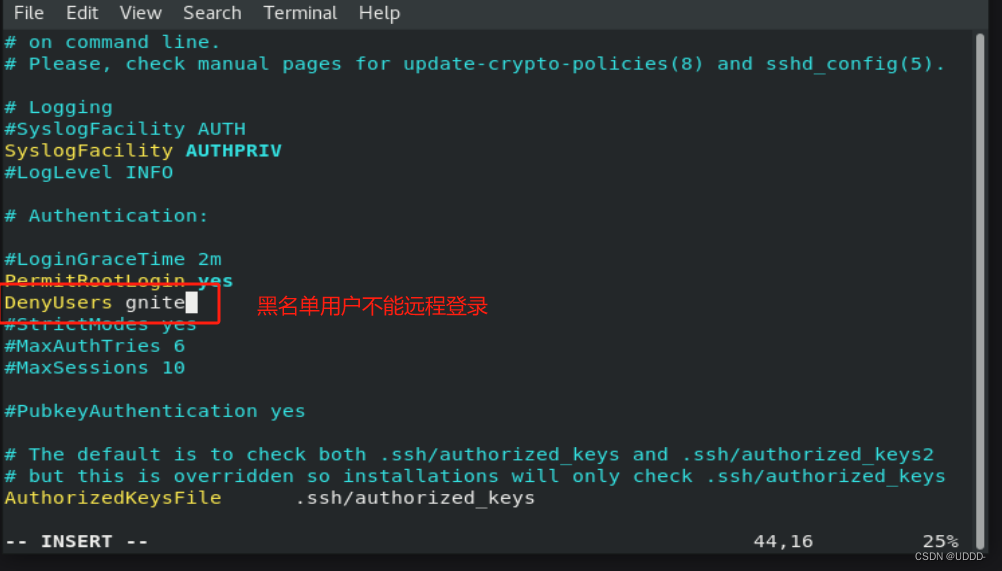

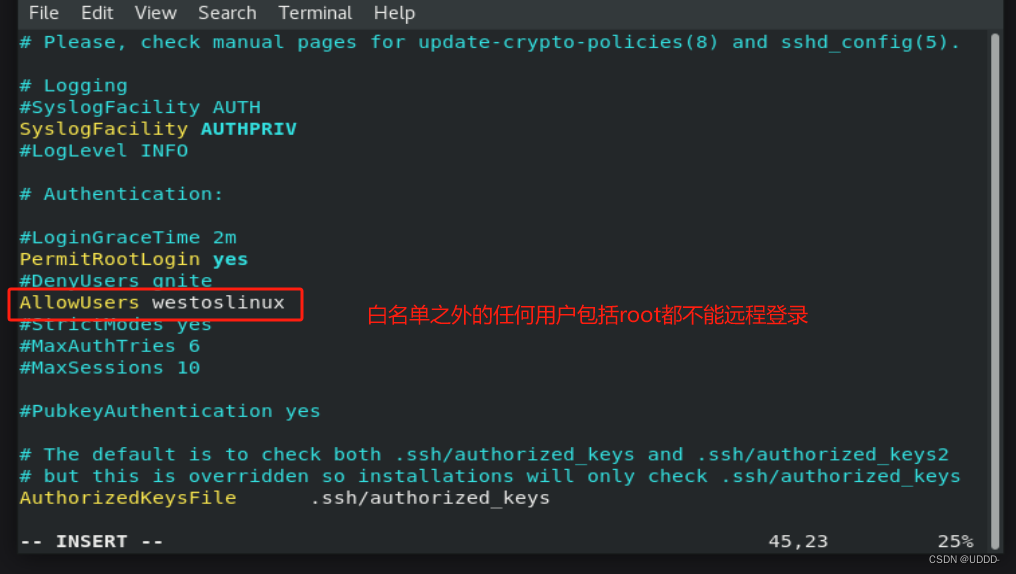
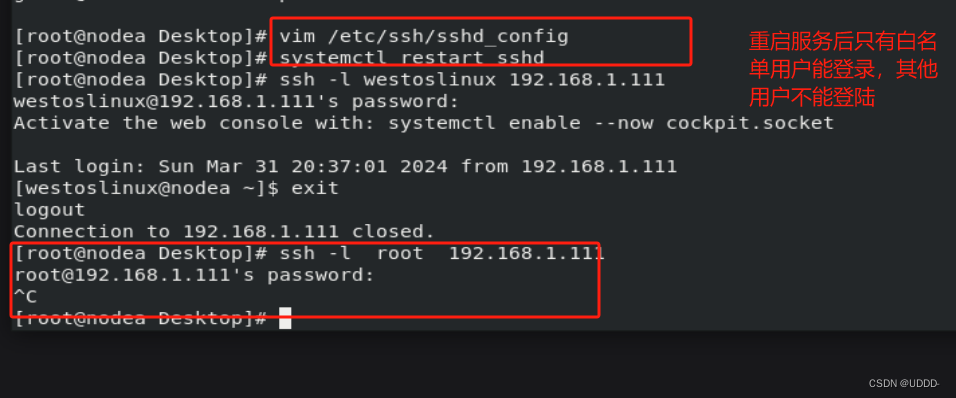
(4)是否开启原始密码认证方式
PasswordAuthentication yes|no #是否开启原始密码认证方式
声明:本文内容由网友自发贡献,不代表【wpsshop博客】立场,版权归原作者所有,本站不承担相应法律责任。如您发现有侵权的内容,请联系我们。转载请注明出处:https://www.wpsshop.cn/w/2023面试高手/article/detail/369818?site
推荐阅读
相关标签

